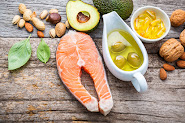Vegetable and carrier oils have a plethora of fine uses which include acting as a carrier for therapeutic applications, as an excellent addition to your culinary creations, as a lathering agent for soap, and a binding medium for cosmetics. It is hard to imagine where we would be with our creations, if it were not for the goodness and substance that pure oil provides. There are so many varieties, however, that it is easy to get overwhelmed. Here is a list of the most commonly used carrier oils!
Almond oil - This is one of the most useful, practical, and comonly used oils. It is great for all skin types as an acting emollient and is best known for its ability to soften, soothe, and re-condition the skin. It is truly marvelous as a carrier oil and is equally superb for addition to body care products.
Apricot kernel oil - A wonderful oil similar to Sweet Almond, but more suitable for sensitive and prematurely aged skin.It can be used liberally in most body care recipes.
Argan oil - This rare and exquisite oil is meticulously pressed from the fruit kernels of the Moroccan Argan tree. Argan oil is rich in natural tocopherols (vitamin E) and phenols, carotenes, squalene and fatty acids, making it a truly luxurious oil. Argan oil absorbs quickly and is often used in skin, nail and hair treatments to deliver deep hydration, strengthen brittle hair and nails, and prevent/reduce stretch marks.
Avocado oil - This ultra rich organic oil is a delightful treasure containing high amounts of Vitamin A, B1, B2, D, and E. Also contains amino acids, sterols, pantothenic acid, lecithin, and other essential fatty acids. Highly prized to those with skin problems such as eczema, psoriasis, and other skin ailments, it also makes a lovely salad oil for dressings and condiments. Highly recommended to those with sensitive skin, problem skin, and other irritations that require vitamin rich oil.
Baobab oil - This exquisite oil is cold pressed from the seeds of Baobab fruit trees growing in Africa. The normal lifespan of a Baobab tree is 500 years, with the oldest trees reaching the age of 5,000 years and a height of 20 meters. Known to the locals in its natural habitat as “The Tree Of Life”, Baobab’s bark, leaves and fruit pulp are also used. Its lovely white flowers emit a smell of rotting meat, which attracts pollinating moths, flies and ants; however, the seed oil itself possesses a light, nutty, almost floral scent. Rich in vitamins A, E and F and sterols, baobab oil absorbs quickly and is a wonderful oil to use in dry skin treatments and products designed to moisturize dry hair.
Borage seed oil -Because of its extremely high levels of gamma linolenic acid, Borage Seed Oil has many potential uses. It has been widely studied for its ability to calm and reduce inflammation, and has been used successfully to alleviate the pain, swelling, and joint stiffness associated with rheumatoid arthritis. Borage Seed Oil has also been used with positive results for many different skin disorders, such as psoriasis, eczema, acne, rosacea, and prematurely matured skin. Furthermore, studies have begun to show that it may be able to be beneficial for treating and preventing a malady of conditions.
Castor oil - A natural source oil from castor beans. A hard and shiny oil found in most cosmetics that acts as a barrier agent and protective medium against harsh conditions and extremes. Very soothing to the skin when included into cosmetic applications.
Coconut oil - This is a great oil for general moisturizing and serves as a protective layer, helping to retain the moisture in your skin. It also acts as a mild oil suitable for those with inflamed and irritated skin, and those with skin sensitivities. Coconut oil is without a doubt the number one lather-producing agent used in soaps.
Grapeseed oil - Grapeseed oil has a mild green color with a pleasant odor, silken texture, and great absorbtion rate. Generally employed as a base oil for many creams, lotions and as a general carrier oil. Grapeseed is especially useful for skin types that do not absorb oils too well, and it does not leave a greasy feeling. Wonderful for those with skin sensitivities because of its natural non-allergenic properties. This oil's shelf life is one of the shortest.
Hazelnut oil - Hazelnut oil is known for its astringent qualities and because of this, it is best used for those who have oily skin but do not want to abstain from using oils.
Hemp seed oil - Exceptionally rich oil high in essential omega fatty acids and proteins. This oil has a pleasant nutty smell, deep green color, and absorbs well into the skin. It makes a marvelous cosmetic grade oil and because of its high nutritional value, it makes a superior quality dietary oil and one that can be used as a base ingredient for skin care recipes which require healing and regenerative ingredients.
Jojoba oil - Jojoba oil comes from the beans of the shrub like plant, simmondsia chinensis. It is bright and golden in color and is regarded as the most favored in the carrier oil family because of its advanced molecular stability. Also makes a great scalp cleanser for the hair, and is equally wonderful for the skin because it has absorption properties that are similar to our skin’s own sebum. It's shelf life is the longest of all the oils!
Kukui nut oil - The Kukui nut tree is the official tree of Hawaii and has been used by natives of this island for hundreds of years. They recognized the oil’s high penetrability and soothing properties and currently they put it to use in helping sooth sunburns and chapped skin. A fabulous ingredient for your cosmetics, or as a stand-alone application, Kukui nut oil contains very high levels of the essential fatty acids linoleic and alpha-linolenic. This oil is readily absorbed into the skin, providing tissues the essential elements that it needs and is particularly good for dry skin, psoriasis, acne and eczema.
Macadamia nut oil - This fine oil comes from the pressed nuts of the Macadamia tree. It is a priceless delight for the skin and has proven itself to be one of the best regenerative oils available. It is high in monounsaturated fatty acids, and closely resembles sebum (the oil naturally produced by one’s skin to help protect it). Macadamia oil is a fabulous, protective oil with a high absorption rate and has been successfully used as a healing oil for scars, sunburns, minor wounds and other irritations.
Neem oil - A magnificent oil with numerous benefits for both therapeutic and medicinal use. Among other properties, this certified organic oil is anti-septic, anti-viral, anti-bacterial, and anti-fungal. Used widely in creams, dental products, hair care products, and in gardens for natural pest control. Can be applied directly to the skin or included within skin care preparations that are designed specifically to treat problematic skin conditions. This oil is exceptionally rich, contains a heavy odor, and may be diluted accordingly.
Olive oil - Olive oil is by far the most universal oils used for a multitude of purposes including cosmetics, as a carrier oil, for hair care solutions, and in cooking. It has a rich, full bodied flavor with a strong aroma and is golden brown in color. It has a great conditioning effect in body care recipes and can be used in almost all applications because of its stable nature.
Palm kernel oil - Palm Kernel Oil is pressed from the fruit kernels of the palm tree Elaeis guineensis. It is most commonly found in handmade soap to increase its lather and hardness. It may also be used in a multitude of other cosmetic and bodycare products for its moisturizing properties.
Plum kernel oil - An incredibly rich and intoxicating oil which gracefully shares it benefits in numerous food and cosmetic applications throughout the world. Plum oil is a recent addition to the exotic oil scene and it has been incorporated into some of the finest food dishes in France and it can be found in some of the most exquisite cosmetics in Italy.
Apricot kernel oil - with a fruity top note, this oil is sure to embellish itself well upon any creation you may choose. High in fatty acids and leaving virtually no residue on the skin, the potential of apricot kernel oil in body care applications is endless.
Pomegranate seed oil - A luxurious and deeply penetrating oil from the cold pressed organic seeds of pomegranate fruit. This highly prized oil which is naturally high in flavonoids and punicic acid is remarkable for the skin and has numerous dietary benefits as well. Deeply nourishing to the outer epidermal layer, Pomegranate seed oil provides powerful anti-oxidant benefits for numerous skin ailments including eczema, and psoriasis and gently challenges free radicals that damage and age the skin. A great ally to have in your cosmetic creations or as a stand alone product to help nourish and develop healthy skin cell regeneration.
Rosehip seed oil - A rich, amber colored organic oil from the ripened fruit of the famed Rosehip. This unique oil is extremely high in essential fatty acids and has carried much respect amongst professional journals and organizations as being a great agent in the fight against dry, weathered, and dehydrated skin. It works wonders on scars and is the predominant oil used for treating wrinkles and premature aging. Can be used in all fine skin care recipes.
Safflower oil - A highly moisturizing oil with an exceptionally high amount of Oleic acids. Deeply soothing and one of the first choices for skin care recipes requiring moisturizing benefits.
Shea nut oil - Shea oil is a byproduct of Shea butter production where the pressing of the seeds produces a fractionated oil. This oil leaves a smooth and healthy feel to the skin and offers benefits for numerous skin problems including dermatitis, eczema, burns, cutaneous dryness and other irritations. Highly recommended as a protective agent against harsh weather conditions where a mild barrier against the elements is desired.
Soybean oil - High in natural source lecitihin, sterolins, and vitamin E, this oil makes a great base for your products which are being created for outer epidermal healing. Soybean oil is easily absorbed and leaves a smooth sensation to the skin. Remember soy is a gmo, so try to get one that isn't.
Sunflower oil - An oil wealthy in Oleic acids with high amounts of Vitamins A, D, and E, also has beneficial amounts of lecithin, and unsaturated fatty acids. Deeply nourishing and conditioning for the skin and it is highly recommended for recipes designed to treat dry, weathered, aged, and damaged skin.
Tamanu oil - This oil is extracted by a cold pressed method from the whole organic nuts of the Polynesian Tamanu tree. Tamanu oil has been thoroughly researched, and the conclusive evidence on its ability to heal damaged skin is overwhelming. Its benefits are notable for the treatment for scarring, stretch marks, minor cuts and abrasions, rashes, sores and much more. Can be used directly on the skin or mixed within formulations.
Wheat germ oil - This ultra rich, unrefined Wheat Germ oil is a great ingredient high in natural source Vitamin E, A, D, proteins, Lecithin, and Squalene. Wheat germ has been applied externally for numerous irritations including roughness of the skin, cracking, chaffing and many crafters of cosmetics use it successfully to help reverse the effects of wrinkling. Keep in mind it does have a strong scent.



























